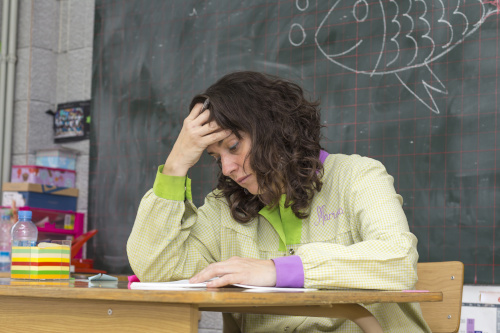Teachers were stressed even before the COVID-19 pandemic upended schools and sent teachers and students home to learn virtually, but the pandemic certainly added to growing teacher burnout.
The truth is that teachers manage much more than instruction. Teachers offer support and encouragement and are an integral part of students’ lives. In some cases, they’ve privy to information students don’t want to share with their parents or caregivers, putting teachers in the important position of stepping in to keep students safe from abuse, bullying, or self-harm.
It’s no wonder, then, that with all teachers juggle, their burnout rate is high. Here are some essential reads to help manage and conquer teacher burnout–and put educators in a fresh frame of mind as they close the door on the 2020-2021 school year and take the summer to refresh, refocus, and de-stress.
1. Teachers need emotional support, too. The saying goes that you can’t fill from an empty bucket. It’s not just students who are feeling stressed out during the pandemic–K-12 leaders should consider how to meet the social and emotional needs of their staff as well.
2. Working against teacher burnout requires intentional effort. Sometimes, teaching is more like bombardment: Grading hundreds of essays, placating disgruntled parents, accommodating learning needs, sweating out the principals’ nerve-wracking classroom observation. And then there are the stressors of life beyond the classroom.
3. If you’re feeling overwhelmed today, you’re not alone. Teachers across America are struggling with unprecedented levels of mental stress. When asked to describe their mental health and stress levels, the five most common terms that educators used were “sad,” “overwhelmed,” “anxious,” “fearful,” and “worried.” Thankfully, positive psychology can help you to build your resilience to stress, prevent burnout, improve your overall well-being, and lead to better outcomes in your classroom.
4. Teacher stress could cost your schools more than you think. Teachers need the right support to deliver high-quality instruction, and teachers who do not have access to the proper resources have higher job-related stress that negatively impacts student achievement.
5. The impacts of physical stress in the classroom are widespread and have ramifications that stretch far beyond the classroom. Educators, along with school administrators, must invest time in social-emotional learning and stress management.
6. It is essential to reduce stress and teacher burnout by keeping the passion for teaching alive. Addressing the stress and anxiety associated with teachers burnout and learning how to control cognitive thinking are the first steps.
7. One decision to try something new helped me build new connections in and around my classroom–and that one change has made a world of difference. After all, it’s hard to have a lonely day of teaching when you’re surrounded by friends supporting you and cheering you on.
8. Teacher resilience is critical. While the challenges at the beginning of the pandemic were many, the ways in which teachers exhibited their resiliency spoke to the intelligence and creativity of our nation’s educators. It is becoming clear that there are a number of effective practices of teachers who successfully supported and taught our children and their families.
9. Sometimes, just finding the right instructional resources can be a daily chore that takes hours. Learn how this teacher avoids an avalanche of online information and locates the right high-quality teaching resources for her students.
10. We know by now that social-emotional learning (SEL) is critically important for students. But it’s equally important in fighting teacher burnout, too. COVID-19 has thrown educators for a loop, and paying attention to mental health is critical–these SEL activities can help teachers maintain peace.
- A look at AI use in schools across the country - November 18, 2024
- 5 ways your classroom environment boosts student engagement - November 14, 2024
- Federal toolkit targets safe, ethical AI use in classrooms - November 11, 2024


